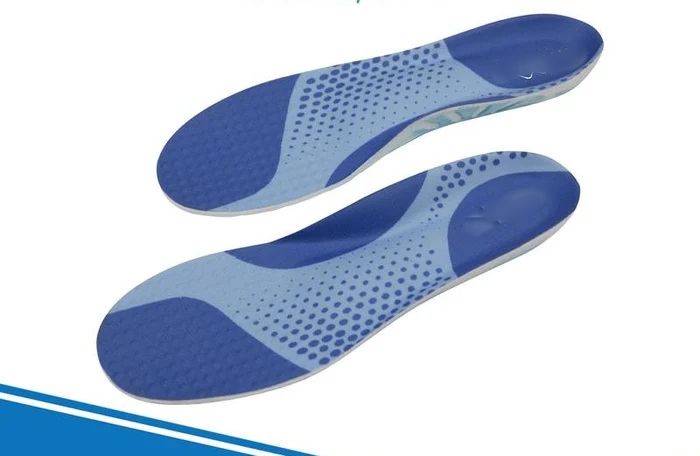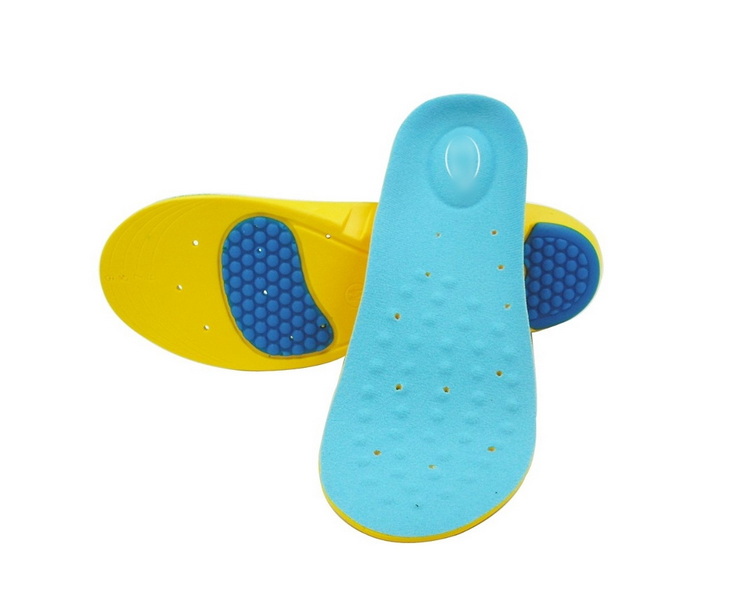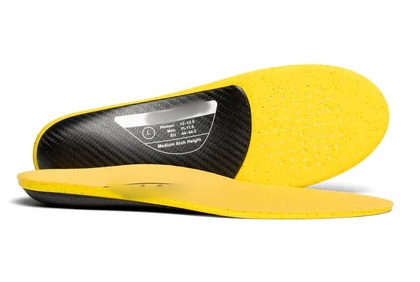










Content Menu
● Understanding Memory Foam Insoles
● The Pros of Memory Foam Insoles
>> 1. Exceptional Initial Comfort
>> 2. Shock Absorption and Pressure Relief
>> 4. Comfortable for Casual Use
>> 5. Low-Cost Cushioning Option
● The Drawbacks of Memory Foam Insoles
>> 1. Lack of Structural Support
>> 2. Poor Breathability and Moisture Retention
>> 5. Unsuitable for Sports or Orthotic Needs
● Memory Foam Insoles vs. EVA Insoles
● When Memory Foam Insoles Can Be Harmful
● Better Alternatives: EVA and Hybrid Insoles
● Signs It's Time to Replace Memory Foam Insoles
● How to Choose the Right Insoles
● How Our Factory Supports Your Brand
● Maintenance Tips to Extend Insole Life
● The Science Behind Comfort and Support
● Why Memory Foam Remains Popular
● FAQs
>> 1. Are memory foam insoles suitable for daily use?
>> 2. Can memory foam insoles help relieve foot pain?
>> 3. How often should memory foam insoles be replaced?
>> 4. Are there breathable memory foam options?
>> 5. What's the best material for reliable insole manufacturing?
Memory foam insoles have long been associated with luxurious comfort. Anyone who has slipped their foot into a shoe lined with this spongy material knows the initial sensation—soft, cushioned, and form-fitting. This type of insole molds to your foot shape, delivering comfort that feels personalized.
However, many consumers and footwear professionals are now asking a different question: Are memory foam insoles bad in the long run? Despite their early comfort advantages, memory foam insoles may not deliver the structural support or durability your feet need. This article explores everything about memory foam insoles—their pros, cons, lifespan, and recommended alternatives—while sharing insights from experienced Chinese insole manufacturers providing OEM services to global brands.

Memory foam was originally developed by NASA for aircraft seat cushioning, designed to absorb pressure and vibration. The material, officially called viscoelastic polyurethane foam, reacts to heat and pressure by softening and molding around the object it touches—in this case, your foot.
When used in footwear, memory foam insoles adapt to each step, distributing your body weight evenly and reducing direct foot pressure. That's why many brands promote memory foam shoes as “walking on clouds.” Yet, the same softness that makes them appealing can also cause hidden issues over time if not properly engineered.
One of the biggest reasons memory foam insoles have become popular is their instant comfort factor. The material hugs your foot's every curve, cushioning every step. For many users, it feels far more comfortable than standard rubber or flat insoles, especially when new.
Memory foam does an excellent job absorbing shock. It acts as a cushion between your foot and the ground, reducing impact with every stride. This can alleviate temporary discomfort, particularly for people who stand for short periods or walk on hard surfaces.
Because memory foam conforms to your foot shape, it gives a customized feel, even though it's not technically tailored. It can help balance weight distribution temporarily and provide relief for users with minor pressure points.
For everyday walking or light errands, memory foam insoles feel soft and plush. They are often the material of choice in lifestyle and fashion footwear where long-term orthotic support isn't a top priority.
From a manufacturing standpoint, memory foam is a relatively cheap way to enhance perceived comfort. It allows shoemakers to market a “comfort upgrade” without significantly raising the retail cost.
While memory foam insoles start off impressively, their comfort doesn't always last. In fact, long-term use can lead to noticeable disadvantages that affect not only comfort but also posture and foot health.
One major issue is that memory foam insoles lack proper arch and heel support. They compress easily and do not rebound quickly. Over time, the foam remains flattened, which may affect your natural foot alignment. Poor arch support can lead to discomfort, knee strain, and even back pain with daily wear.
The dense structure of memory foam limits airflow, trapping heat and moisture inside the shoe. In warm environments, this can make your feet sweaty and increase the risk of odor or bacterial growth. For prolonged wear, this becomes unpleasant and unhygienic.
Another drawback is lifespan. Even high-quality memory foam loses its bounce and structure after frequent use. Once the foam compresses and flattens, the cushioning effect dramatically decreases, leaving your feet with little protection against hard surfaces.
Memory foam is known for its “slow response” behavior—it doesn't immediately spring back to shape. This quality, while comfortable at first, can create instability for dynamic movements such as running, jumping, or lateral motion. The slow rebound can make the foot feel less supported during high-impact activities.
Athletes or individuals with pre-existing foot conditions such as plantar fasciitis, flat feet, or high arches may find memory foam insoles inadequate. Because they offer little corrective support, they cannot stabilize the foot properly during performance or aid in long-term pain relief.

To understand the difference in performance, it's helpful to compare memory foam insoles to EVA (Ethylene Vinyl Acetate) insoles, one of the most widely used materials in sports and orthotic footwear.
| Feature | Memory Foam Insoles | EVA Insoles |
|---|---|---|
| Comfort | Soft and plush; conforms easily to foot | Balanced cushioning; more consistent over time |
| Support | Minimal; easily compresses | Excellent support and resilience |
| Breathability | Traps heat and moisture | Allows air circulation |
| Durability | Quickly flattens with use | Retains structure and bounce longer |
| Ideal Use | Casual walking or lounging | Everyday wear, sports, orthotic support |
EVA combines flexibility with structure. Unlike memory foam, it maintains its shape even after repeated compression, making it a superior choice for users seeking both comfort and stability.
Memory foam insoles aren't necessarily bad—they simply need to match the right activity and individual foot type. Problems arise when they're used in situations where more structural support is required. For example:
- Athletes may experience poor performance due to the slow responsiveness of the foam, leading to fatigue or poor balance.
- Workers on their feet all day may develop soreness or foot strain once the foam loses its cushioning.
- People with orthopedic issues might worsen their condition due to lack of arch retention.
- Individuals in hot climates may suffer from excessive sweating and odor buildup.
Long-term reliance on overly soft insoles can subtly alter gait patterns and body alignment, increasing the risk of joint pain. Thus, pairing the correct insole type with your activity level is essential to maintaining healthy posture and foot comfort.
The most reliable alternative to memory foam is EVA foam. EVA offers durable shock absorption and responsiveness, maintaining elasticity even after prolonged use. It's lightweight, non-toxic, and available in various densities to match different footwear needs—from athletic to orthopedic.
For users who still want the plush feeling of memory foam but crave durability, hybrid insoles combine EVA with gel or PU layers. These designs deliver the best of both worlds: soft cushioning on top and firm stability at the base.
Leading Chinese insole manufacturers often specialize in customizing these hybrid structures under OEM orders for international brands. Through precision molding, multi-layer bonding, and material optimization, they deliver long-lasting comfort and brand-specific performance.
Like most soft materials, memory foam insoles have a limited lifespan. Recognizing the signs of wear ensures that you replace them before discomfort sets in.
- The foam remains flat and doesn't bounce back.
- You feel foot pain or fatigue after short walking sessions.
- The insoles start to smell or feel damp even after drying.
- They lose shape or wrinkle underfoot.
- The edges crumble or detach from the shoe interior.
If you notice any of these signs, consider replacing them with EVA or custom orthotic insoles for better long-term comfort and alignment.
The ideal insole depends on foot type, intended use, and comfort preference. Before choosing, consider the following factors:
- Determine your foot shape: Flat-footed individuals benefit from strong arch support, while high arches require balance cushioning.
- Assess activity level: For high-energy or sports use, EVA or gel hybrids work best. Memory foam suits light-duty, casual use.
- Check ventilation: Look for insoles with perforations or breathable linings.
- Evaluate durability: Choose high-density foam or multilayer constructions for prolonged wear.
- Prioritize hygiene: Antibacterial or washable designs are crucial for maintaining freshness and extending product life.
As one of the leading insole manufacturers in China, our factory offers OEM and ODM solutions for international footwear brands, wholesalers, and comfort product companies. Our facilities integrate research, design, and manufacturing, allowing full customization of insole materials, density grades, and ergonomic shapes.
Our core strengths include:
- Advanced mold design and 3D foot model customization
- Multi-density EVA production and lamination technology
- Breathable, odor-resistant material options
- Automatic cutting, printing, and branding systems
- Sustainable materials compliant with global standards
We collaborate with clients across Europe, North America, and Asia, delivering insoles for athletic shoes, work boots, medical footwear, and comfort fashion lines. Each project undergoes rigorous quality control to ensure consistent performance, durability, and branding impact.
By partnering with us, you gain a dedicated OEM supplier who understands both functional performance and market aesthetics—helping your brand stand out in competitive international markets.
Even the best insoles need proper care to deliver lasting comfort. Follow these maintenance steps for optimal hygiene and longevity:
1. Air dry after each use. Remove insoles overnight to reduce moisture accumulation inside shoes.
2. Avoid machine washing. Spot clean gently with a cloth and mild detergent.
3. Alternate shoes. Rotating between pairs allows foam to recover and reduces wear.
4. Use foot powders or deodorizers. Keep moisture under control to prevent bacterial growth.
5. Check for flattening regularly. Replace them every few months depending on usage intensity.
These simple habits help preserve cushioning efficiency and prolong your footwear investment.
Comfort isn't just about softness—it's about balance. A truly effective insole combines three elements: cushioning, stability, and rebound.
Memory foam fulfills only one of these—the cushioning factor. It lacks the structural stability needed to maintain foot alignment. In contrast, EVA materials distribute energy more evenly, bounce back faster, and provide supported flexibility. This biomechanical difference explains why professional footwear designers increasingly favor EVA-based designs for both comfort and performance.
Proper foot alignment contributes to better body posture, reduced pressure on joints, and improved walking mechanics. Therefore, a well-engineered insole isn't just footwear—it's a foundation for your entire body.
Despite its limitations, memory foam remains popular in the consumer footwear market. One reason is perception—people associate softness with comfort. Another reason is cost-effectiveness, as memory foam offers an easy marketing advantage for brands wanting to highlight comfort features.
However, premium shoe brands and medical footwear developers increasingly transition toward EVA, PU, or hybrid materials to align with modern performance and sustainability expectations. As awareness grows, more consumers value durability and long-term comfort over temporary softness.
So, are memory foam insoles bad? The answer depends on your expectations and usage. They aren't inherently bad, but they're not ideal for every situation. For short-term or casual wear, memory foam delivers undeniable comfort. Yet, for long-term use, athletic performance, or orthotic correction, it falls short in providing the structure and stability your feet need.
If your goal is sustained comfort with support, EVA or hybrid insole solutions are the better choices. These materials preserve bounce, maintain foot alignment, and ensure durability even under daily wear.
As a trusted Chinese OEM insole manufacturer, we are committed to creating customized comfort systems for brands around the world, combining aesthetic design with scientific precision. Whether you manage a footwear brand, retail chain, or e-commerce label, we can provide optimal insole manufacturing solutions for every market demand.

They provide short-term comfort but degrade quickly under constant pressure. For everyday wear, EVA or hybrid insoles offer better support and longevity.
They may temporarily reduce pressure but don't correct underlying biomechanical problems. Orthopedic or firm-support insoles work better for long-term pain management.
Typically every 3–6 months depending on wear. Replace them sooner if you notice flattening, odor, or discomfort.
Some brands use perforated or mixed-foam versions for better ventilation, but they still retain more heat than EVA-based designs.
EVA foam remains the industry standard for its strength, elasticity, and customizable properties. It performs well across sports, work, and comfort applications.